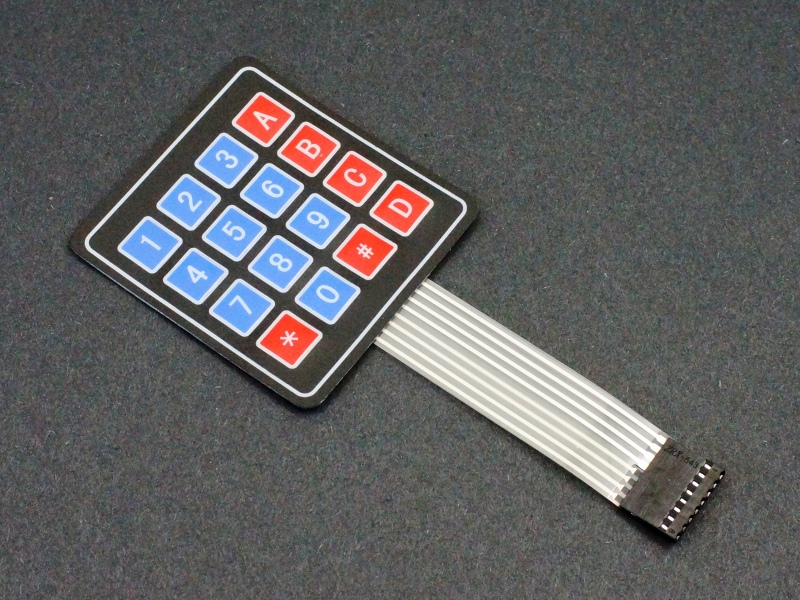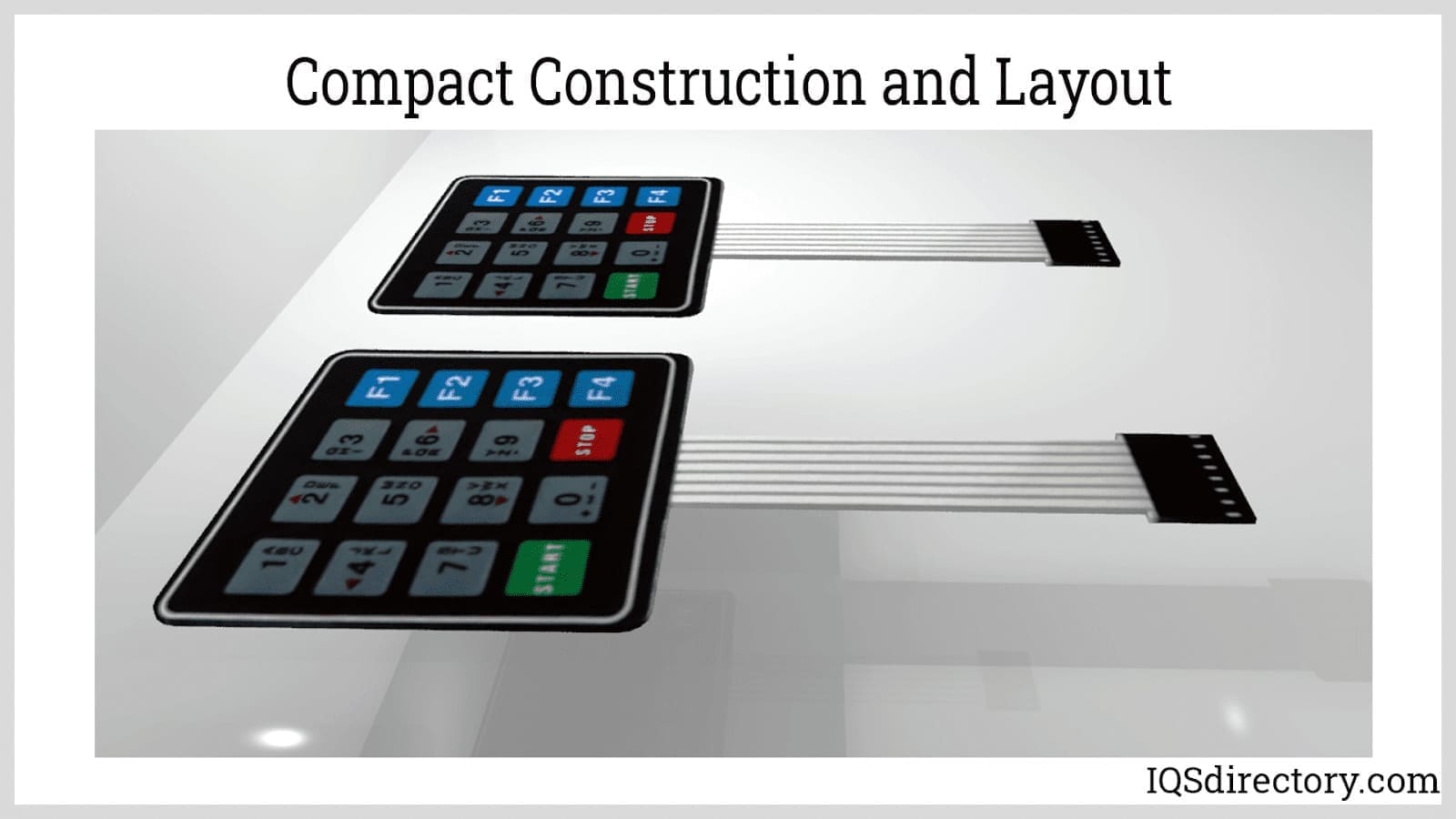Top Applications for Membrane Switches in Consumer Electronics
Top Applications for Membrane Switches in Consumer Electronics
Blog Article
Recognizing the Relevance of Membrane Switches in Customer User Interfaces
Membrane buttons are essential elements in the style of efficient interface, helping with not just capability however likewise improving aesthetic allure and customer communication. Their unique functions, such as resistance to ecological elements and personalized layouts, make them suitable for a diverse selection of applications across numerous sectors. As we discover the future trends and various advantages connected with Membrane modern technology, it comes to be clear that these buttons are greater than just elements; they represent a convergence of innovation and usefulness. The ramifications of this technology on user experience deserve analyzing further.
What Are Membrane Switches?

The spacer layer, which has glue homes, permits the splitting up of the circuit layer from the overlay, guaranteeing that the button stays in a non-activated state till pressed. When stress is used to the overlay, it presses the spacer layer, linking the void and finishing the circuit in the underlying layer. This design not only minimizes the physical space needed for traditional mechanical buttons yet also improves the durability of the device, as Membrane switches are usually resistant to dirt, moisture, and other ecological factors.
Frequently discovered in applications ranging from customer electronic devices to medical devices, Membrane switches are integral to modern-day innovation, giving a easy to use and effective user interface that straightens with contemporary design needs.
Advantages of Membrane Switches
While countless switch technologies exist, Membrane Switches offer distinctive advantages that make them particularly desirable in numerous applications. Among the primary advantages of Membrane buttons is their small design, which enables space-saving implementations in tools where real estate is limited. Their slim account not only improves visual allure yet additionally promotes light-weight building and construction.
One more significant advantage is their resistance to ecological factors. Membrane buttons are normally sealed versus dampness, dirt, and impurities, making them ideal for use sought after environments, such as medical tools and industrial equipment. This resilience prolongs the lifespan of the switch, reducing upkeep prices and improving reliability.
Furthermore, Membrane buttons can be personalized to fulfill specific layout requirements, integrating special graphics and colors that enhance customer communication. Their responsive feedback choices can likewise be customized to give a satisfying customer experience. Additionally, Membrane switches are cost-effective, particularly in high-volume applications, as they can be generated efficiently.
Applications in Various Industries

In the customer electronics sector, Membrane switches prevail in devices such as microwaves, cleaning devices, and remote controls. Their responsive comments and visual choices boost user experience while giving a sleek, contemporary appearance. Additionally, vehicle makers use Membrane switches in dashboard controls and infotainment systems, where area is restricted, and customer involvement is vital.
Moreover, the industrial market leverages Membrane switches in control panels for machinery and tools, enabling user-friendly operation in commonly extreme settings. Their resistance to chemicals and wetness ensures long life and reliability in these applications. In general, the versatility of Membrane Switches contributes considerably to their prevalent use, making them vital in numerous technological domain names.
Layout Considerations for Membrane Switches

When making Membrane buttons, several key factors to consider should be considered to ensure ideal performance and individual experience. To start with, the selection of products is essential; picking resilient, top quality substrates can enhance the switch's durability and resistance to ecological factors such as wetness and temperature level variations.
Second of all, the design of the graphic overlay should focus on quality and simplicity of usage. Icons and message need to be clear, and the design needs to facilitate instinctive interaction (membrane switches). Additionally, responsive comments is necessary; including a tactile dome or other systems can boost the individual experience by offering physical confirmation of activation
Another essential element is the button's electrical performance. Designers should make certain that the conductive traces are appropriately made to lessen resistance and avoid signal disturbance. This involves assessing the required actuation force and making sure compatibility with the electronic components they will certainly interface with.

Future Patterns in Membrane Technology
As innovation remains to advance, Membrane buttons are positioned to develop substantially, driven by innovations in products and manufacturing methods. One arising fad is the unification of sophisticated products, such as adaptable substrates and image source conductive inks, which boost durability and decrease the total weight of Membrane switches. These materials not only enhance a fantastic read the responsive reaction yet also permit the style of switches that can stand up to harsher ecological conditions.
Moreover, the combination of touch-sensitive modern technologies is changing standard Membrane Switches right into even more interactive user interfaces. Capacitive touch sensing units embedded within Membrane switch panels can give a much more responsive and instinctive customer experience, aligning with the expanding need for smooth, modern-day designs in consumer electronics.
Additionally, improvements in printing techniques, such as digital and 3D printing, make it possible for fast prototyping and modification of Membrane switches. This flexibility allows makers to react quicker to market demands and consumer choices.
Last but not least, sustainability is coming to be a significant focus, with suppliers checking out environment-friendly products and procedures. As these trends unravel, the future of Membrane technology assures official website enhanced functionality, visual charm, and environmental responsibility, solidifying their role in sophisticated individual interfaces throughout various sectors.
Verdict
In verdict, Membrane Switches represent a vital component in the layout of individual interfaces, integrating capability with aesthetic adaptability. As innovations in innovation continue, the development of Membrane switches is expected to additional fine-tune user interfaces, driving technology and enhancing functionality in an increasingly complicated technological landscape.
Membrane buttons are integral parts in the design of efficient customer interfaces, promoting not only functionality yet additionally enhancing aesthetic allure and individual communication.Membrane Switches serve as a vital part in numerous user interfaces, facilitating a seamless communication in between customers and electronic gadgets.While numerous button modern technologies exist, Membrane Switches offer distinct benefits that make them particularly desirable in numerous applications.Moreover, Membrane switches can be personalized to meet details style requirements, integrating one-of-a-kind graphics and shades that improve individual communication.In verdict, Membrane Switches represent an essential element in the layout of customer interfaces, integrating capability with visual flexibility.
Report this page